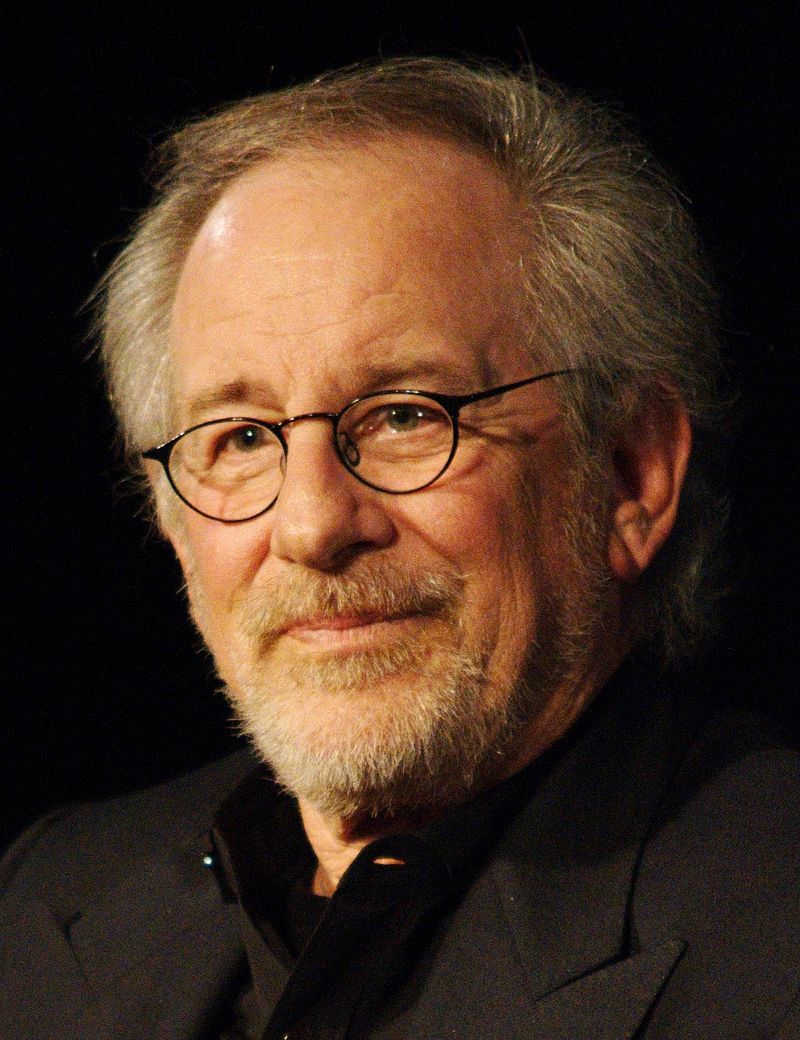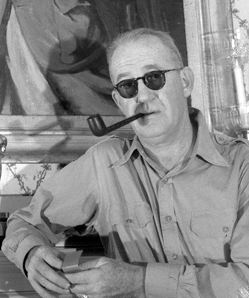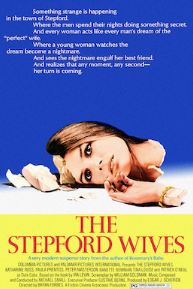What Were Movie Theaters Called in the 1930s?

In the 1930s, grand venues known as "movie palaces" were the epitome of cinematic luxury, offering an opulent escape during the Great Depression. These lavish theaters contrasted sharply with the casual and budget-friendly nickelodeons of earlier decades. The rise of "talkies" and the advent of drive-in theaters further transformed the movie-going experience, reshaping the cultural and technological landscape of the era. Explore how these innovations influenced the film industry and societal norms during this transformative period.
Early Cinema Terminology
In the 1930s, movie theaters ranged from opulent "picture palaces" to more modest "nickelodeons." Picture palaces were grand venues designed to provide a luxurious cinematic experience, featuring ornate interiors, grand staircases, and plush seating. These majestic theaters were where audiences flocked to see the latest Hollywood releases, making every visit a special event.
On the other hand, nickelodeons offered a more accessible and casual movie-going experience. These smaller venues charged just five cents for admission and provided continuous screenings, allowing patrons to watch films at any time.
Vaudeville theaters also remained significant, blending live performances with film screenings for a diverse entertainment experience. The advent of "talkies"—films with synchronized sound—led to the rise of "sound theaters," which specialized in these new, technologically advanced films. By the late 1930s, drive-in theaters began to emerge, offering a novel way to watch movies from the comfort of a car.
Evolution of Movie Theaters
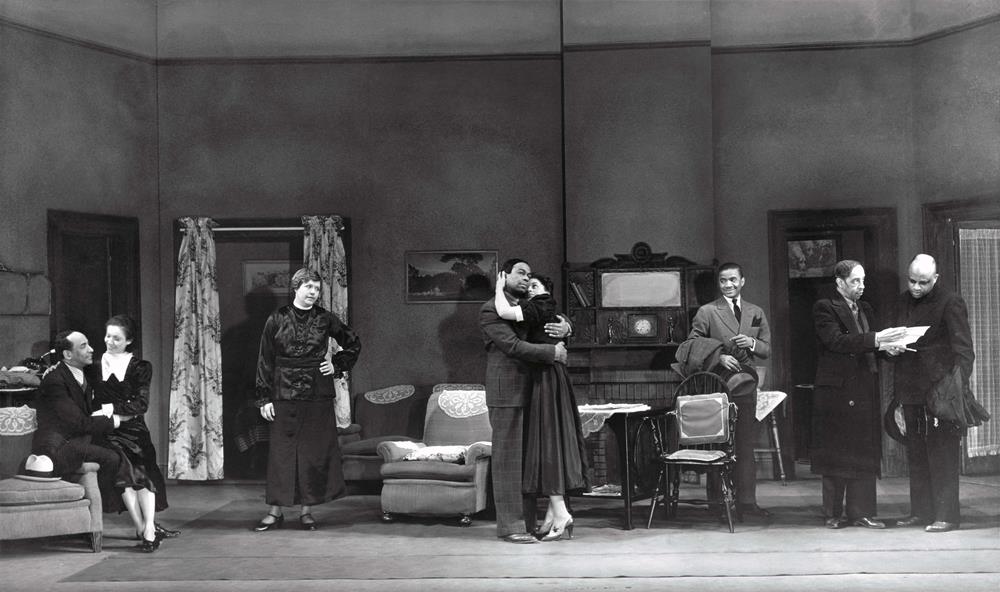
The 1930s marked a transformative period in the evolution of movie theaters, often referred to as "movie palaces" due to their grand and opulent designs. These theaters were not merely venues for watching films; they were architectural marvels with lavish interiors, reflecting the cultural significance of cinema during the Great Depression.
Despite economic hardships, movie palaces adopted luxurious designs to attract audiences. They were equipped with advanced sound systems to accommodate the new trend of sound films, which revolutionized storytelling on screen.
In neighborhood theaters, double features became popular, pairing a high-budget grade A film with a lower-budget grade B film. This strategy offered more entertainment value and made cinema an accessible escape for many.
Additionally, the Federal Theatre Project (FTP) introduced live performances in movie theaters, transforming them into multifaceted performing arts centers. This initiative diversified entertainment options and engaged local communities, further cementing the movie theater's role as a central hub of cultural life.
Rise of Picture Houses
As the 1930s progressed, movie theaters, often called "picture houses," rose to prominence, driven by the allure of sound films and the widespread need for escapism amidst the Great Depression. Picture houses became cultural sanctuaries where audiences could immerse themselves in the magic of motion pictures and temporarily forget their daily struggles.
These picture houses were renowned for their elaborate architectural designs and luxurious interiors, creating a sense of grandeur and offering an extravagant escape. Upon entering, patrons might encounter ornate ceilings, plush seating, and majestic lobbies that made the experience feel special and otherworldly.
One innovation that boosted their popularity was the introduction of double features. For the price of a single ticket, audiences could enjoy two motion pictures back-to-back, making it an irresistible deal and ensuring that picture houses stayed packed. This not only enhanced their appeal but also significantly increased their profitability.
Impact of Talkies
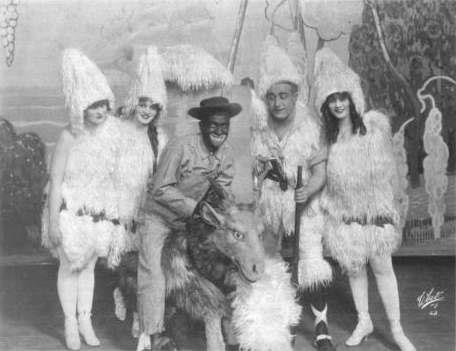
The advent of talkies in the late 1920s revolutionized the movie-going experience. Sound films captivated audiences, making stories more engaging and leading to a surge in cinema attendance. As theaters upgraded their sound systems, the number of movie theaters increased significantly, forever changing how films were enjoyed.
Rise of Sound Films
Few innovations have reshaped the movie industry as profoundly as the advent of sound films, or "talkies." *The Jazz Singer* (1927) marked the dawn of this new era by introducing synchronized dialogue, captivating audiences and setting a new standard for cinematic experiences. By the early 1930s, most theaters had converted to accommodate sound films, leading to a surge in attendance as people flocked to experience this groundbreaking technology.
The rise of sound films transformed American movie-making. Filmmakers faced increased production costs due to the need for sound equipment and trained technicians. Yet, the investment paid off as genres like musicals and comedies flourished. Stars like Fred Astaire and Ginger Rogers became household names, mesmerizing audiences with their dance and dialogue performances, which were simply not possible in silent films.
The success of sound films also led to the decline of silent films and rendered many silent film stars obsolete. The industry shifted its focus to actors who could effectively deliver lines, fundamentally changing Hollywood's landscape.
Sound films truly transformed the cinematic experience.
Shift in Audience Experience
The introduction of talkies transformed audience experiences in the 1930s. With synchronized dialogue and sound effects, movies became more immersive, offering a form of escapism during the Great Depression. Imagine being among the 85 million people visiting theaters weekly, eager to be transported into these engaging worlds.
The rise of sound films necessitated technological upgrades in theaters. Enhanced acoustics and projection systems ensured every line of dialogue and sound effect was clear, making your theater experience richer and more captivating.
However, this shift also led to the decline of live performances in theaters, focusing almost entirely on cinematic presentations. Iconic films like *The Jazz Singer* (1927) marked the beginning of this transformation, ushering in a new era. Your movie-going experience in the 1930s was forever changed, centered around the magic of sound films.
Design and Architecture

Entering a 1930s movie palace, you were immediately captivated by its luxurious design and grand architecture. These theaters boasted bold Art Deco elements, vibrant colors, and intricate details, turning each visit into an experience. With atmospheric interiors and advanced acoustics, they elevated movie-watching into an unforgettable event.
Luxurious Movie Palaces
During the 1930s, luxurious movie palaces captivated audiences with their opulent architectural designs and grand interiors. These theaters were not just venues for watching films; they were extravagant spaces combining styles like French Baroque, High Gothic, and Mediterranean influences. Their grand facades and intricate details showcased the period's architectural prowess.
Notable architectural firms like Rapp & Rapp contributed to these iconic venues, with masterpieces such as the New York Paramount Theatre. The interiors featured lavish ornamentation, making you feel like royalty the moment you stepped inside. Movie palaces didn't just look impressive; they also housed giant screens and cutting-edge projection technologies, enhancing your cinematic experience.
To give you a sense of these theaters:
- Extravagant Interiors: Chandeliers, grand staircases, and plush seating.
- Thematic Designs: The Oriental Theatre in Chicago featured Middle Eastern motifs.
- Advanced Technology: Giant screens and state-of-the-art projectors.
- Cultural Landmarks: These theaters served as community hubs and social hotspots.
- Architectural Marvels: Designs by firms like Rapp & Rapp set new standards in theater construction.
These luxurious movie palaces were cultural landmarks, significantly impacting the social landscape of their time.
Atmospheric Theatre Designs
Atmospheric theatres of the 1930s revolutionized the cinematic experience by replicating outdoor environments. These venues enthralled audiences with celestial effects and scenic elements, creating the illusion of watching a film under a starry sky or in an exotic courtyard.
Architectural grandeur defined atmospheric theatres. They featured elaborate plasterwork and ornate decorations inspired by Mediterranean, Baroque, and Asian styles. Upon entering, intricate designs would transport you to a different world. Architects like John Eberson pioneered this approach, crafting spaces that felt both majestic and intimate.
Groundbreaking sound and projection technologies also set atmospheric theatres apart. Superior acoustics ensured every line was clear, while advanced projection methods enhanced visual clarity. These technological advancements, coupled with engaging designs, provided an unparalleled viewing experience.
Beyond just movie-watching, atmospheric theatres were cultural landmarks. Their architectural grandeur made them community icons, offering an escape from reality and a shared, enchanting experience.
Social and Cultural Influence
Picture palaces in the 1930s served as vibrant social and cultural hubs, transcending their primary role as movie theaters. These venues were integral to community life, offering a blend of film and live performances that created a unique and enriching cultural experience. During the Great Depression, approximately 85 million people visited these theaters weekly, finding solace and escape from their daily challenges. The combination of live acts with movie screenings transformed these theaters into dynamic spaces where audiences felt a strong sense of belonging.
The introduction of double feature presentations also significantly influenced the cultural landscape. By offering two movies for the price of one, theaters met the public's demand for both value and entertainment. This strategy ensured a steady stream of repeat visitors, embedding cinema deeply into the social fabric of the time.
Significance of Picture Palaces:
- Community Centers: Central to neighborhood life.
- Diverse Entertainment: Merging movies with live performances.
- Escape from Hardship: Providing relief from economic struggles.
- Affordable Fun: Double features offered great value.
- Cultural Impact: Enriching the local cultural scene.
Luxury Movie Palaces
Stepping into a 1930s luxury movie palace, you are immediately captivated by its magnificent architecture, inspired by styles such as French Baroque and High Gothic. These theaters offered more than just films; they featured plush seating, elaborate lobbies, and dining options, becoming ultimate social hubs. With the advent of sound and Technicolor, these palaces were the premier venues for experiencing the latest cinematic innovations.
Architectural Grandeur Elements
In the 1930s, luxury movie palaces captivated audiences with their architectural grandeur, blending styles like French Baroque and High Gothic to create awe-inspiring interiors and exteriors. These theaters were masterpieces of opulent ornamentation, featuring intricate plasterwork and grand staircases that left patrons in awe. Each architectural element was meticulously crafted to transport you into a different world.
Entering one of these palaces, you'd be greeted by ornate lobbies with lavish lounges and dining areas. The introduction of giant screens and pivoting back seats in the 1930s greatly enhanced the viewing experience, offering both comfort and an engaging environment. This attention to detail extended to atmospheric effects, making every visit memorable.
Key features included:
- Intricate plasterwork: Detailed designs that adorned walls and ceilings.
- Grand staircases: Majestic and sweeping, often the centerpiece of the lobby.
- Atmospheric effects: Carefully designed lighting and sound to create a unique ambiance.
- Ornate lobbies and lounges: Spaces for socializing and relaxing before the show.
- Giant screens and pivoting back seats: Innovations for a superior viewing experience.
Cultural and Social Impact
The architectural grandeur of the 1930s movie palaces wasn't just about aesthetics; it played a significant role in shaping their cultural and social impact. These luxury movie palaces, with their extravagant designs combining styles like French Baroque and Mediterranean, attracted upper-middle-class audiences seeking upscale entertainment. They weren't merely places to watch films; they served as cultural landmarks, fostering a sense of community and transforming cinema into a popular pastime.
Visiting these opulent venues offered more than just a movie experience. The grand facades, plush seating, and elaborate concession stands enhanced the viewing experience, making every trip to the theater an event. These theaters became social hubs, where people gathered not only to see films but also to connect with others. The intimate atmosphere made them popular dating venues, allowing couples to form connections in the darkened spaces.
The luxury movie palaces of the 1930s also reflected changing consumer preferences, especially with the emergence of double feature presentations. This innovation allowed audiences to enjoy both grade A and grade B films in a single outing, further solidifying these theaters as cultural landmarks and social hubs of their time.
Technological Innovations Introduced
In the 1930s, luxury movie palaces embraced technological innovations that transformed the cinematic experience into a spectacle of sight and sound. These opulent venues incorporated advanced sound systems, which enhanced the auditory experience and brought films to life with unprecedented clarity and depth.
Giant screens were another significant innovation, providing larger-than-life visuals that drew enthusiastic crowds eager to witness the grandeur of cinema. The introduction of pivoted back seats in 1931 added to the comfort, allowing easier passage and a more enjoyable viewing experience. These plush seats invited audiences to relax and fully immerse themselves in the spectacle.
The architectural designs of movie palaces during this period were breathtaking, blending diverse styles to create visually stunning environments that complemented the films. Stepping into one of these theaters felt like entering a different world. Additionally, the increasing popularity of Technicolor films showcased vibrant color technology, with releases like *The Wizard of Oz* (1939) leaving audiences in awe.
Key features that made 1930s movie palaces extraordinary included:
- Advanced sound systems
- Giant screens
- Pivoted back seats
- Elaborate architectural designs
- Popular Technicolor films
These innovations made movie palaces unforgettable destinations for film lovers.
Economic Contributions
Picture palaces of the 1930s were more than entertainment venues; they served as vital economic engines during the Great Depression. Attracting 85 million visitors weekly, these theaters became essential pillars of economic stability. The surge in ticket sales, fueled by innovations like sound and Technicolor films, provided crucial revenue during widespread financial hardship.
The booming movie industry created a multitude of jobs, extending beyond theater staff to include film production crews and other related occupations. The Federal Theatre Project (FTP), a New Deal initiative, significantly contributed by financially supporting theaters and employing thousands, thereby enriching both the cultural and economic landscapes.
Movie theaters also acted as community hubs, stimulating local economies through increased foot traffic. Patrons spent money not only on tickets and concessions but also at nearby businesses, creating a ripple effect that benefited entire communities. Thus, picture palaces played a critical role in economic recovery during one of America's most challenging periods.
Technological Advancements
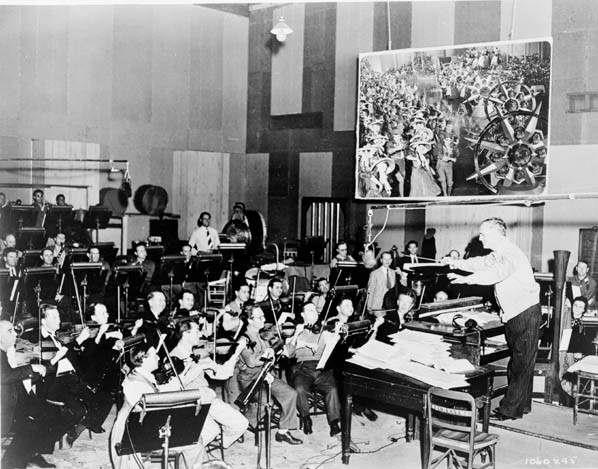
During the 1930s, movie theaters not only bolstered the economy but also adopted groundbreaking technological advancements that transformed the cinematic experience. Stepping into a "picture palace" at the time, you would encounter several innovations designed to enhance your visit.
The introduction of sound films, or "talkies," in the late 1920s and early 1930s was revolutionary. Audiences could now hear actors speak, sing, and interact, making genres like musicals particularly popular.
Technicolor technology also made a significant impact. Films such as *The Wizard of Oz* (1939) showcased vivid colors that captivated audiences. Larger screens and improved sound systems further enhanced the movie-going experience.
By the late 1930s, movie theaters began incorporating air conditioning, making them comfortable havens during hot summer months and attracting even more patrons.
Key technological advancements that defined 1930s movie theaters include:
- Introduction of sound films ("talkies")
- Advancement of Technicolor technology
- Larger screens
- Improved sound systems
- Adoption of air conditioning
These innovations made the "picture palace" experience unforgettable, offering an engaging escape during the Great Depression.
Legacy and Preservation
The legacy of 1930s movie theaters endures, capturing the essence of an era that valued grandeur and communal experiences. These "movie palaces" were cultural landmarks, designed to bring communities together with their ornate designs and opulent interiors. They provided an upscale cinematic experience that continues to influence contemporary cinema design.
Preservation efforts for these historic theaters focus on maintaining their architectural integrity and historical significance. Restoration projects aim to revive their original splendor by carefully restoring intricate details. Organizations and advocacy groups play a crucial role in these efforts, recognizing the importance of these theaters in the history of American cinema and community engagement.

